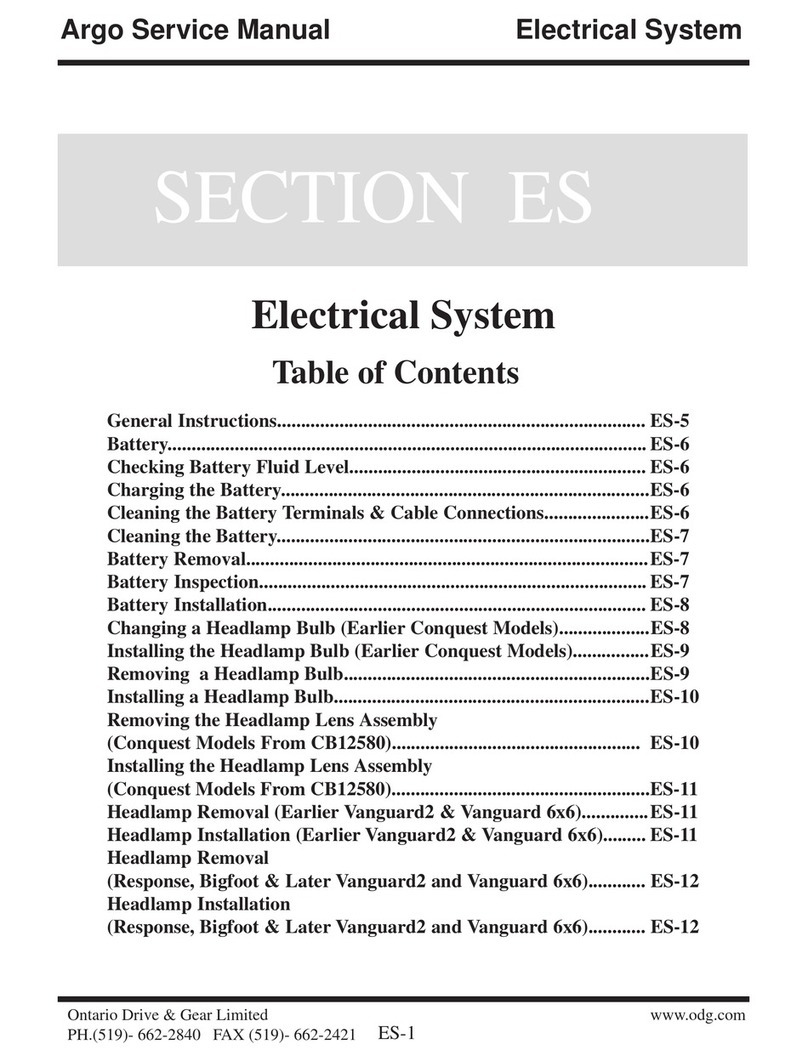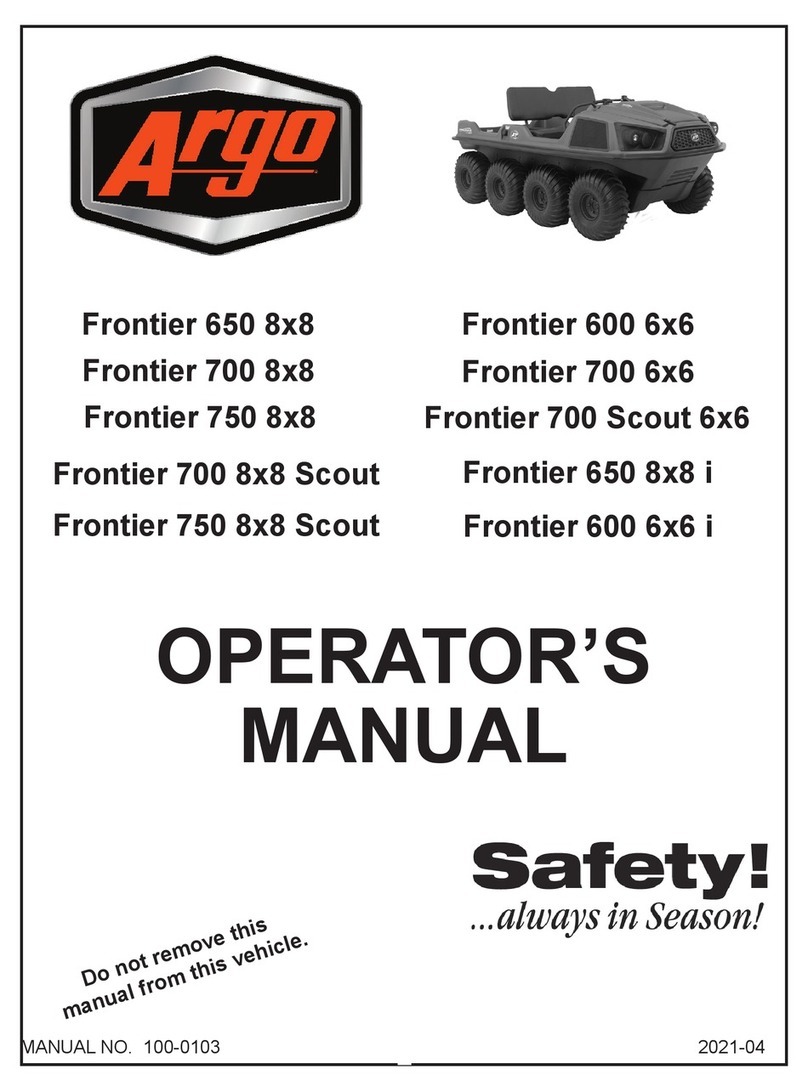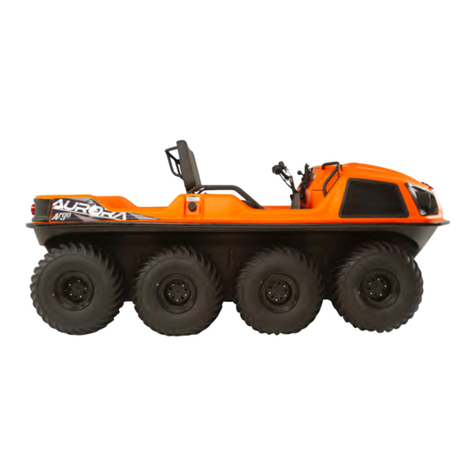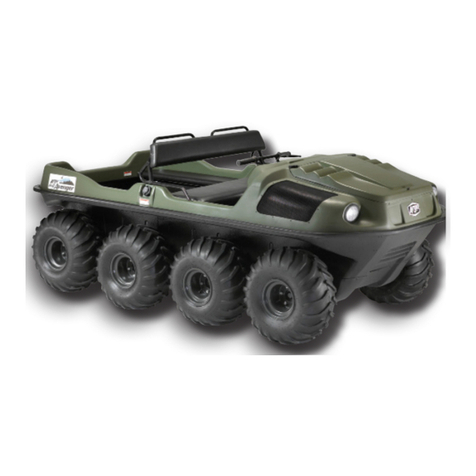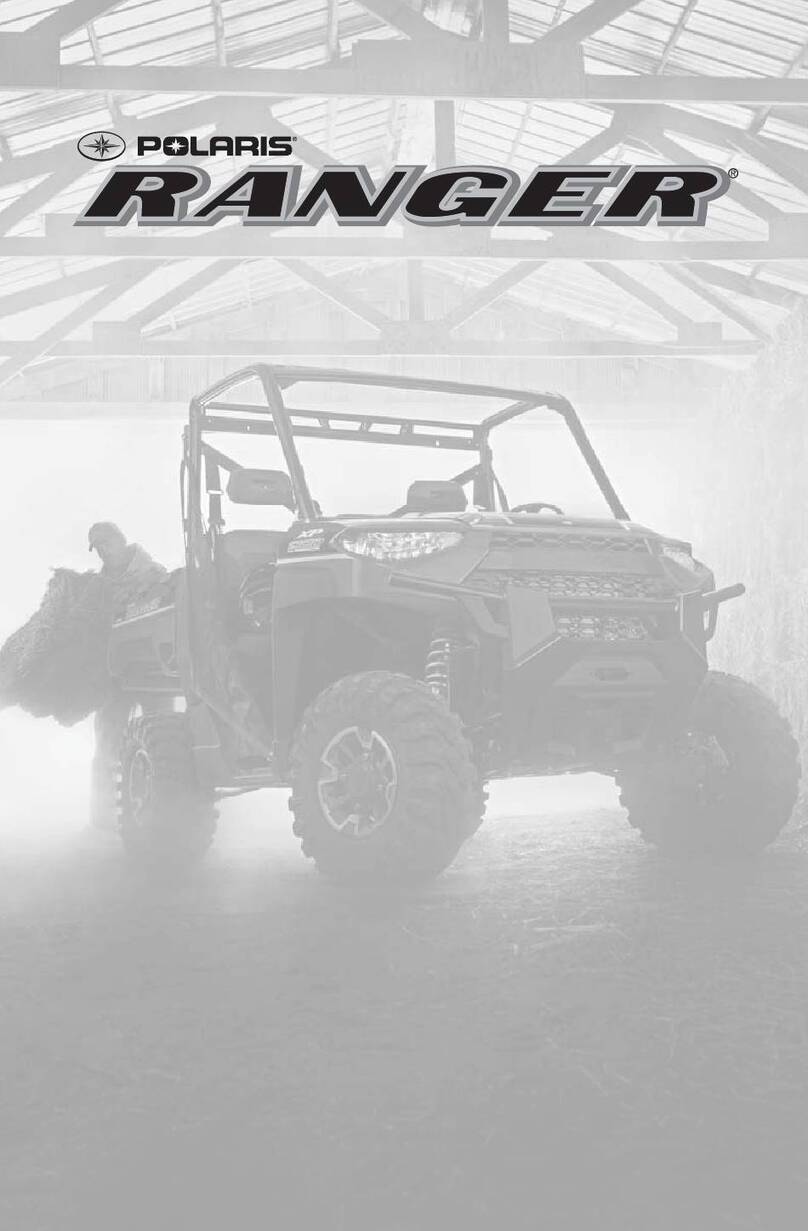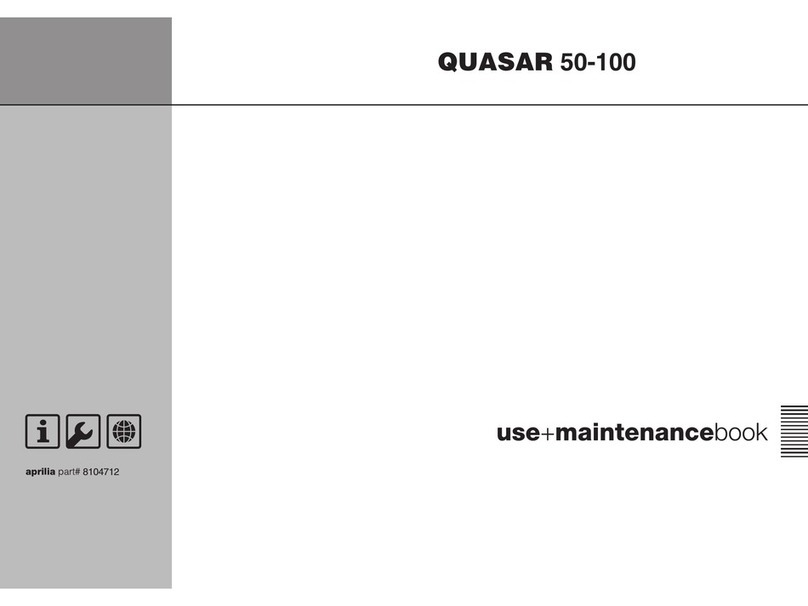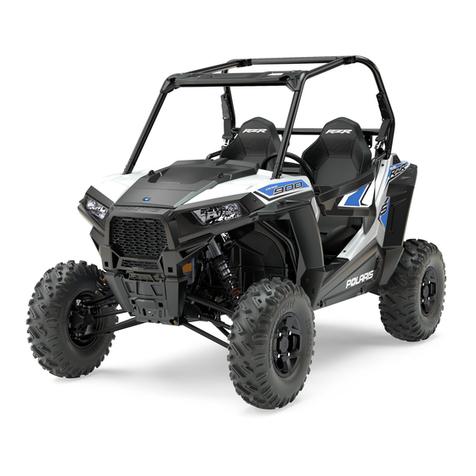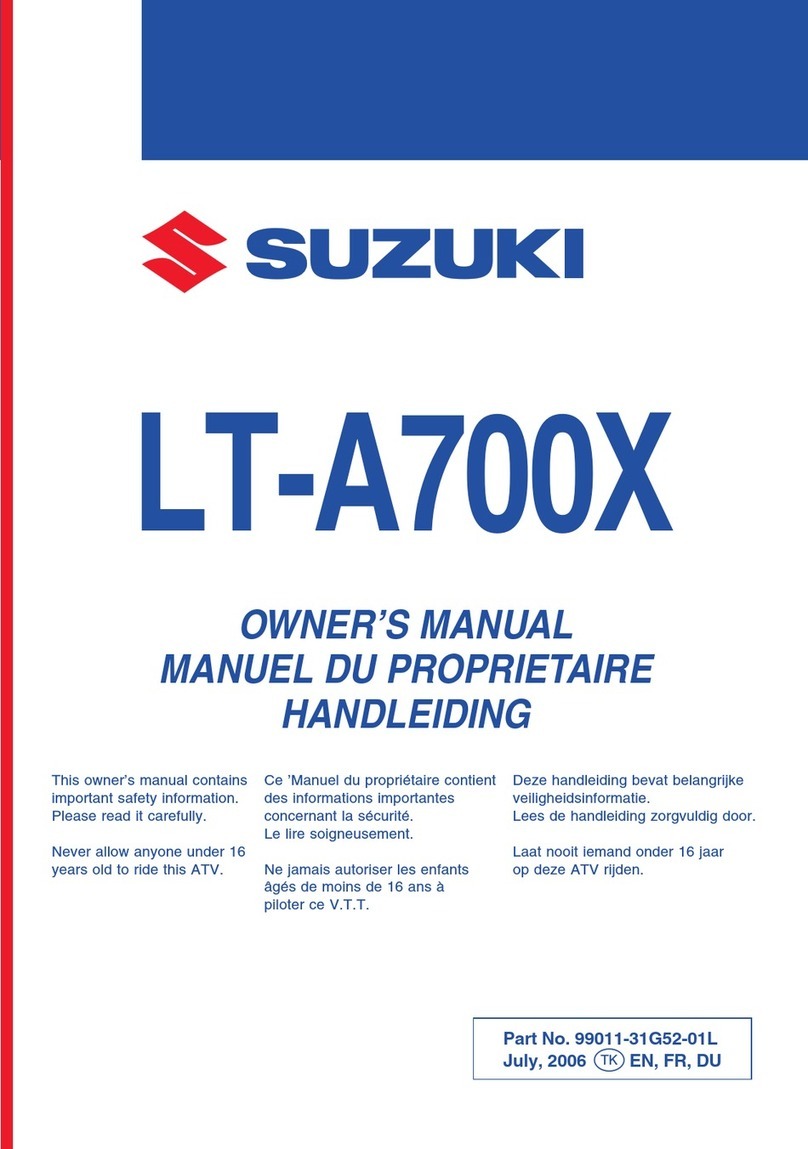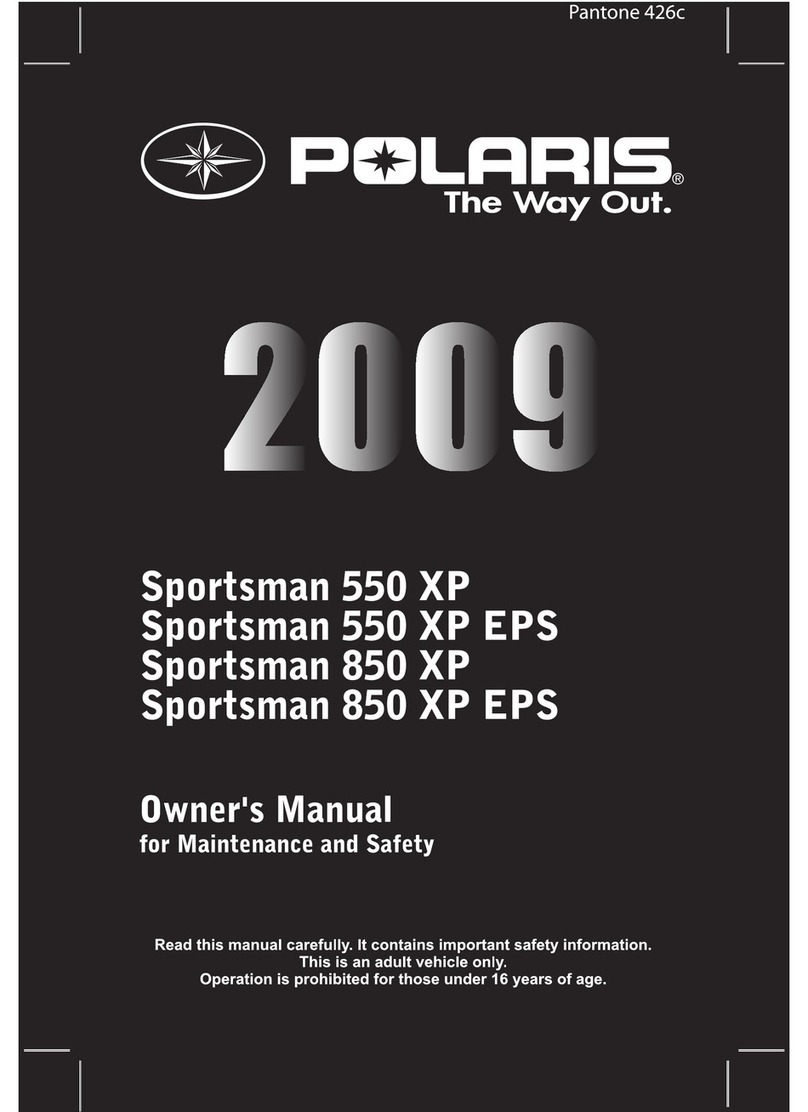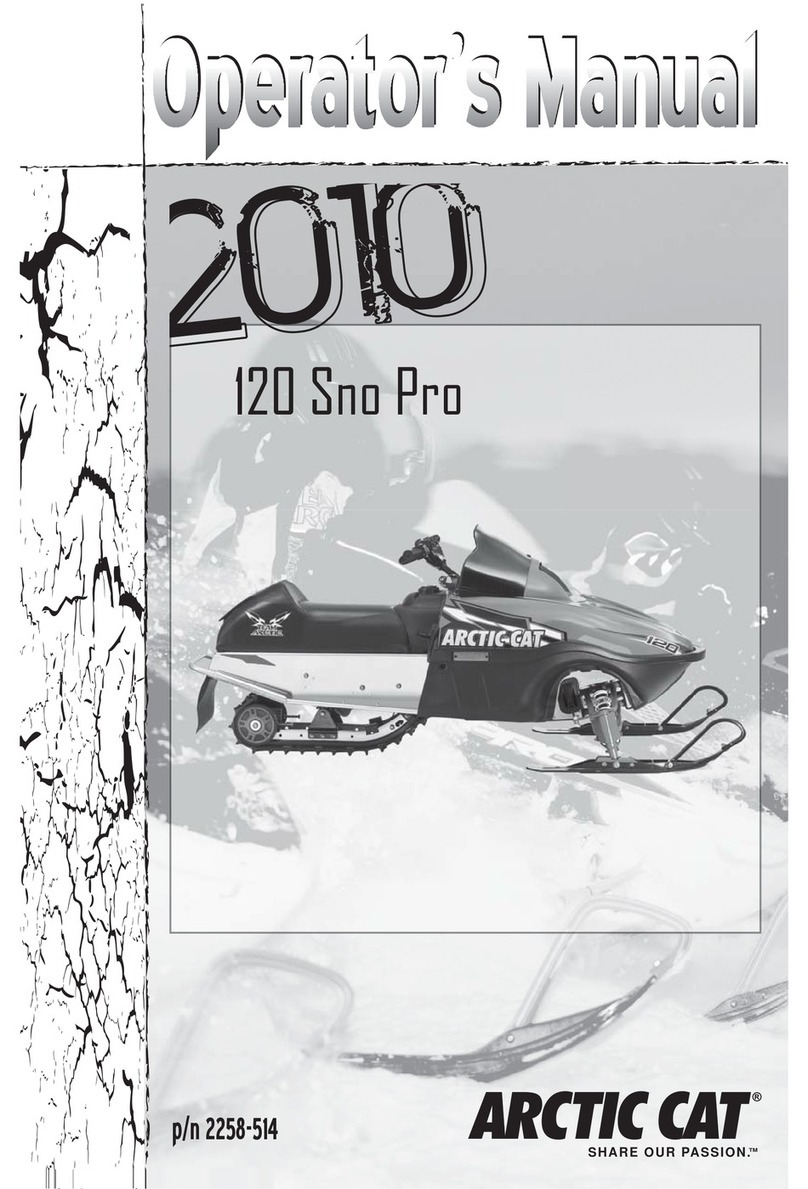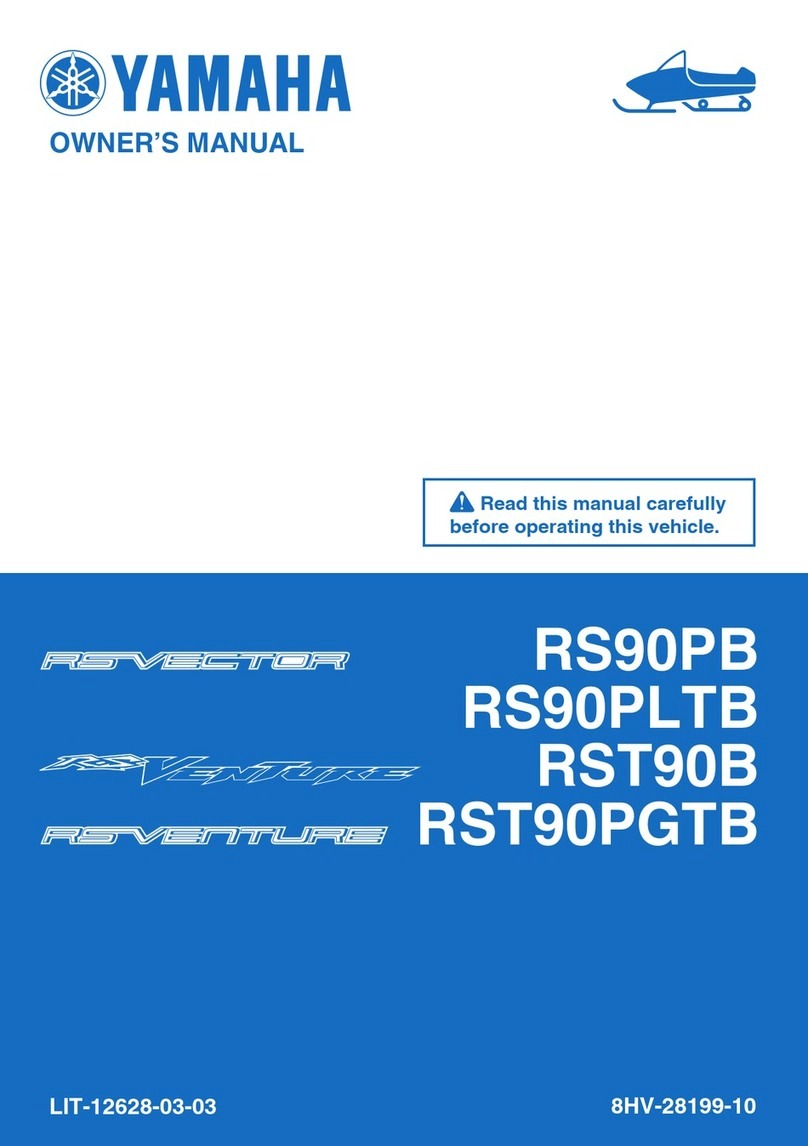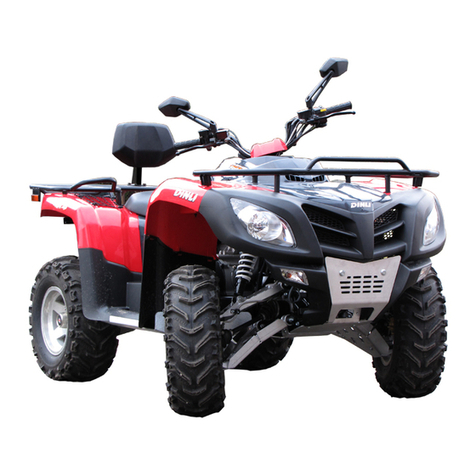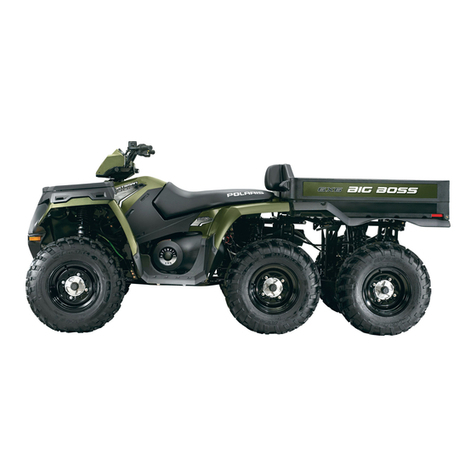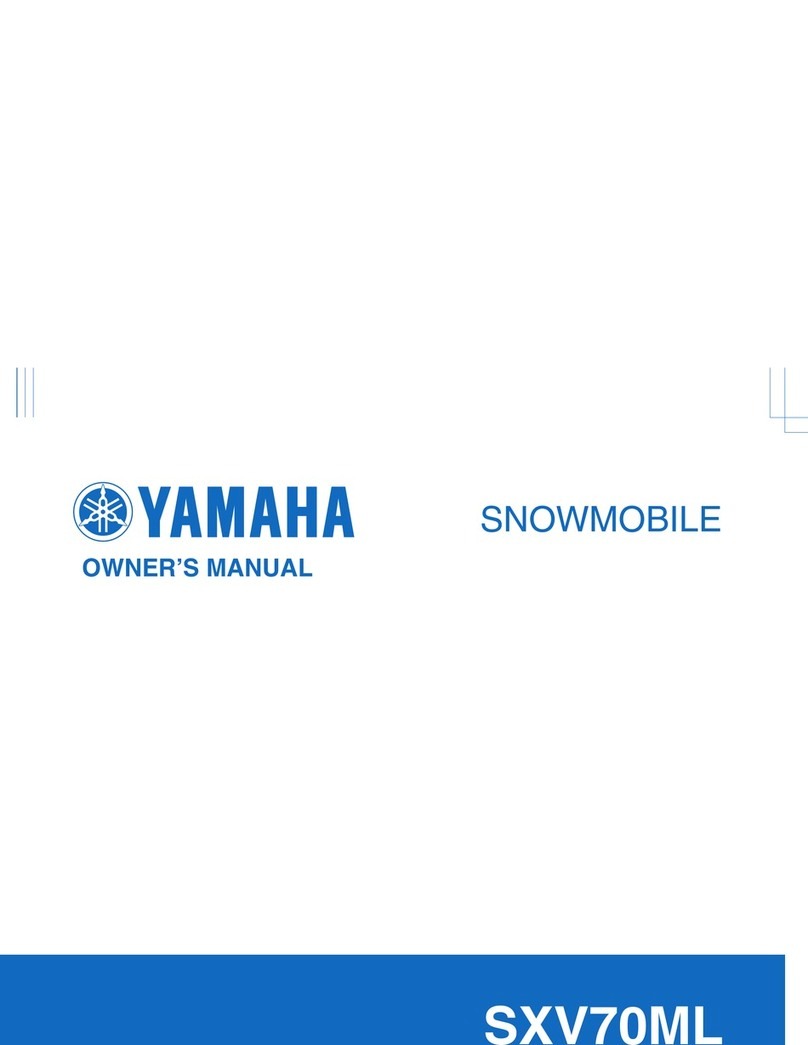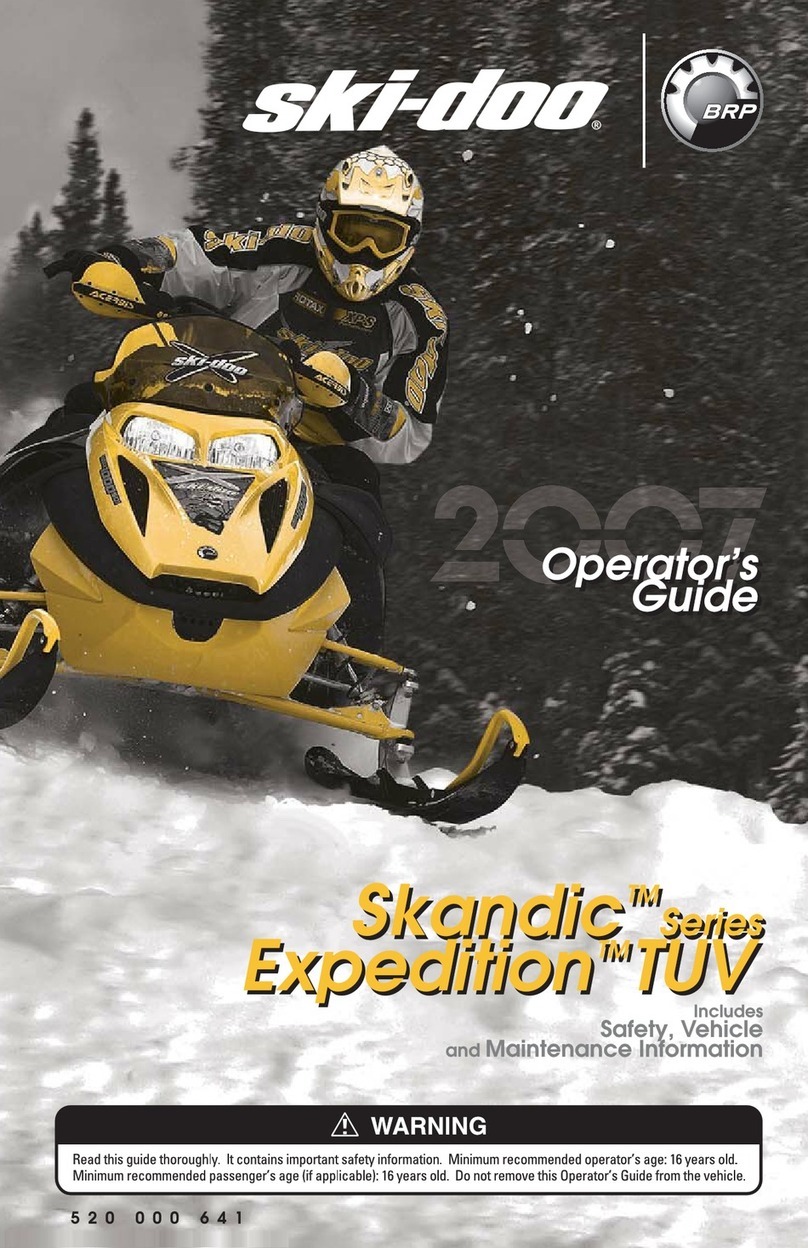
SECTION PAGE
5.6.1 Entering Water .................................................................................................... 15
5.6.2 Driving Procedures in Water............................................................................... 15
5.6.3 Driving Out of Water .......................................................................................... 15
5.7 WINTER OPERATION .................................................................................................... 15
5.7.1 Use on Ice Covered Bodies of Water.................................................................. 16
6.0 OIL, FILTER AND LUBRICATION INFORMATION
6.1 ENGINE OIL INFORMATION........................................................................................ 17
6.1.1 Checking the Engine Oil Level........................................................................... 17
6.1.2 Recommended Engine Oil.................................................................................. 17
6.1.3 Changing Engine Oil .......................................................................................... 17
Draining the Engine Oil...................................................................................... 17
Relling the Engine ............................................................................................ 18
6.2 TRANSMISSION OIL INFORMATION ......................................................................... 18
6.2.1 Checking the Transmission Oil Level ................................................................ 18
6.2.2 Changing the Transmission Oil ......................................................................... 18
Relling the Transmission ................................................................................. 18
6.3 FILTER INFORMATION ................................................................................................. 18
6.3.1 Air Filter ............................................................................................................. 18
6.3.2 Fuel Filter ........................................................................................................... 19
6.4 LUBRICATION INFORMATION.................................................................................... 19
6.4.1 General................................................................................................................ 19
6.4.2 Clutch Lubrication .............................................................................................. 19
6.4.3 Drive Chain Lubrication ..................................................................................... 19
6.4.4 Automatic Chain Oiler System (if equipped) ..................................................... 19
6.4.5 Axle Bearing Lubrication ................................................................................... 20
6.4.6 Output Shaft Lubrication .................................................................................... 20
7.0 MAINTENANCE INFORMATION
7.1 ELECTRICAL SYSTEM.................................................................................................. 21
7.1.1 GENERAL.......................................................................................................... 21
7.1.2 BATTERY........................................................................................................... 21
Checking the Fluid Level.................................................................................... 21
In-Vehicle Service and Testing ........................................................................... 22
Safe Installation .................................................................................................. 22
Check the Charging System ............................................................................... 22
Charging Tips ..................................................................................................... 22
Battery Storage Tips .......................................................................................... 23
Jump Starting ..................................................................................................... 23
Cleaning the Battery Terminals and Cable Connections .................................... 23
Cleaning the Battery ........................................................................................... 23
7.1.3 ELECTRICAL SYSTEM FUSES ...................................................................... 23
7.1.4 SPARK PLUGS .................................................................................................. 23
7.1.5 SPARK ARRESTER........................................................................................... 24
7.2 DRIVE SYSTEM & TIRES.............................................................................................. 24
7.2.1 DRIVE BELT.......................................................................................................24
IV
TABLE OF CONTENTS


